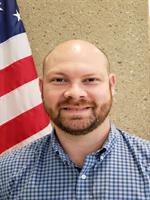 Evolution of Drinking Water Analysis During EPA's First 50 Years
Evolution of Drinking Water Analysis During EPA's First 50 Years50 Years of Progress in Environmental Monitoring
Oral Presentation
Presented by W. Adams
Prepared by G. Smith
U.S. EPA, 26 West Martin Luther King Drive, Mail Stop 140, Cincinnati, Ohio, 45268, United States
Contact Information: [email protected]; 513-569-7652
ABSTRACT
Since the announcement of the National Reconnaissance Survey of Drinking Water Systems in 1974, EPA has maintained a strong interest in sensitive and selective analytical methods to monitor contaminants in finished drinking water. This interest continues into the present with much of the current focus on emerging contaminants and monitoring strategies that allow quantitative measurement at ultra-trace levels. Many of the early methods were based on “wet” chemical analyses. The first major advances in technology occurred in the 1950s through the 1960s. During this period, the first commercial GC, GC/MS, AA and HPLC instruments appeared. Although these early instruments made low-level organic and inorganic analysis possible, they were often difficult to operate and maintain and often required more “art” than science from a highly trained operator. The advent of solid-state electronics, improvements in computer processing and advances in chromatographic separation technology from the 1980s through the 2000s significantly increased the robustness of existing instrumentation and allowed strategies such as non-targeted analysis to become viable. This presentation will provide an overview of EPA early drinking water methodology and the advances that have occurred during the subsequent 50 years.

